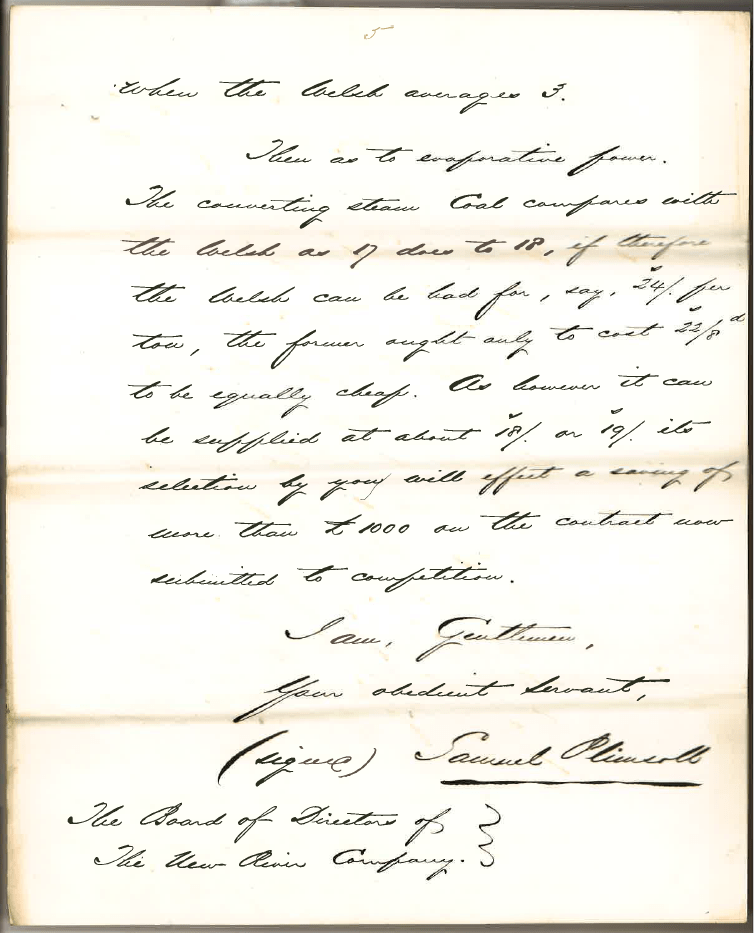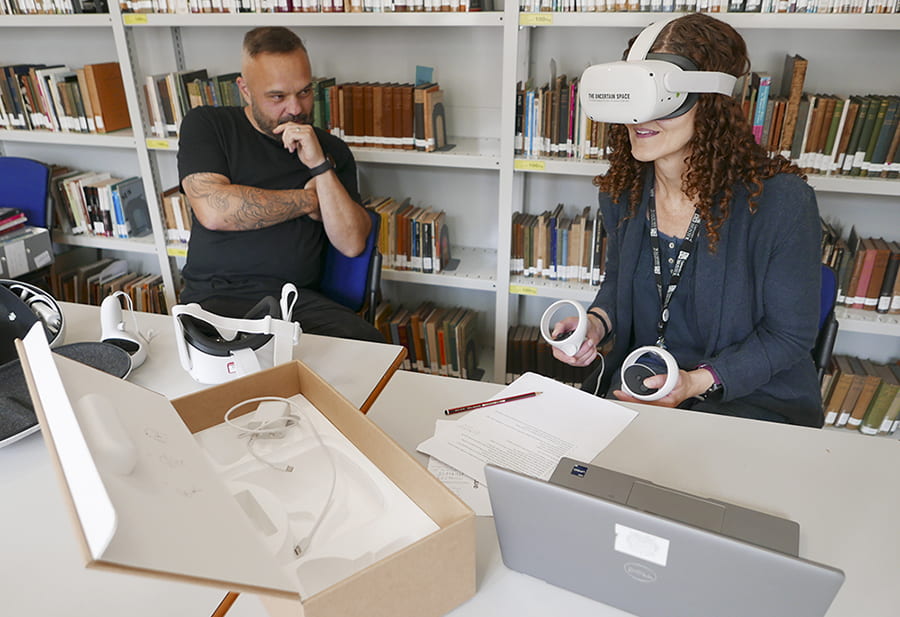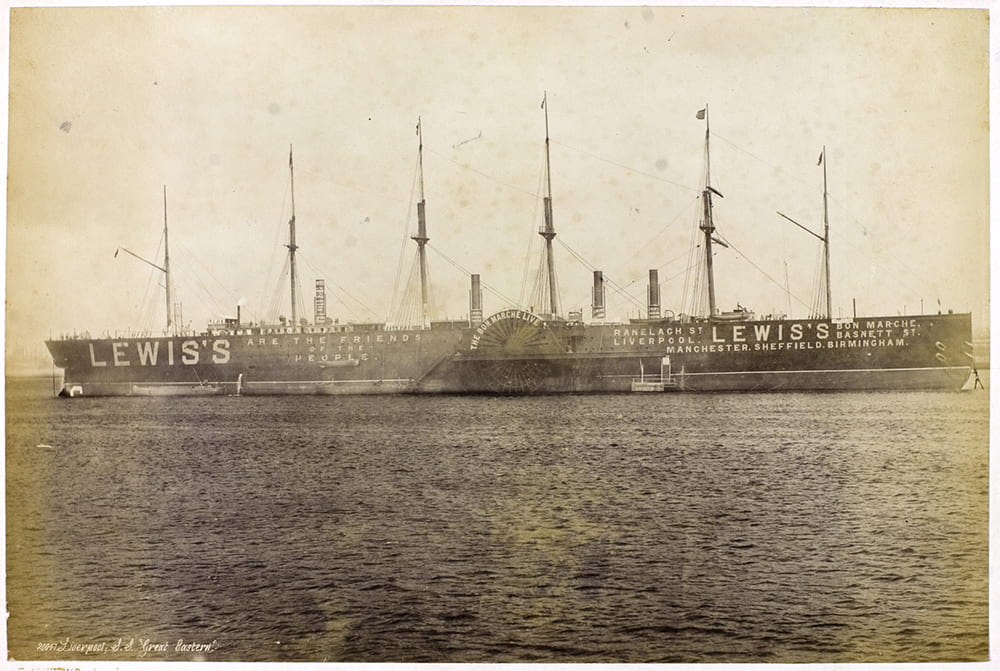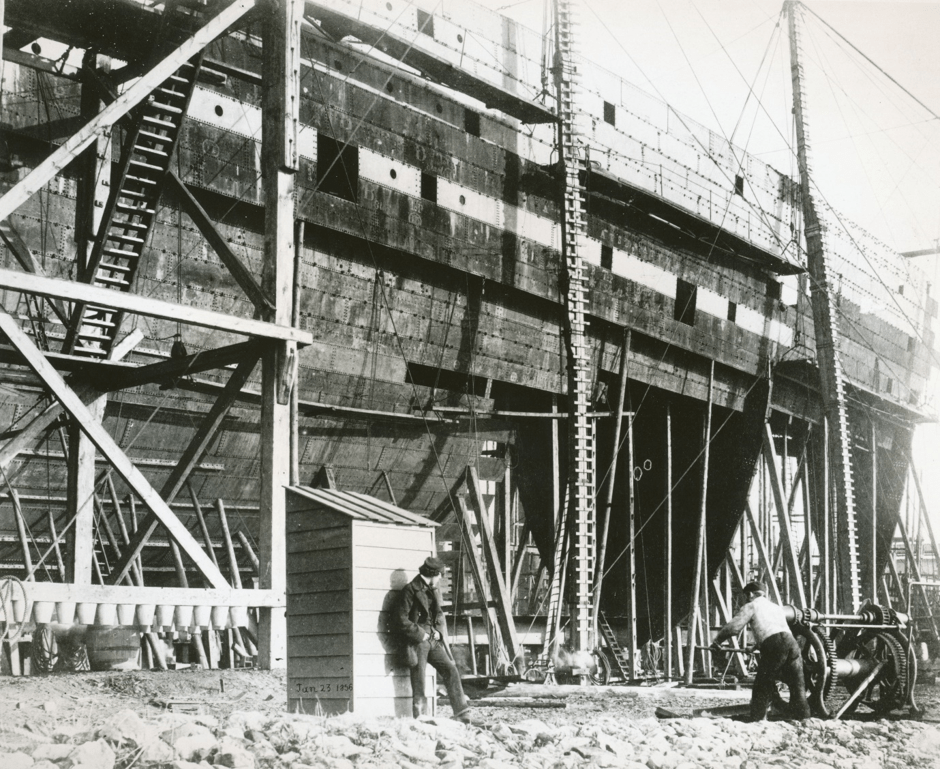Emma Howgill is a project archivist at Special Collections, University of Bristol. She has recently completed the cataloguing of Isambard Kingdom Brunel’s S.S. Great Eastern letter-books and here writes about her work on part of DM1306.
For the last nine months, I have been working on cataloguing a small section of DM1306, the Personal Papers of Isambard Kingdom Brunel, specifically dealing with Brunel’s final project, the SS Great Eastern. The largest ship for almost half a century after her launch, the Great Eastern was packed with technological innovations including a double skinned hull and a compartmentalised bulkhead system that allowed her to remain afloat even if the hull was damaged, and with a novel combination of both screw propeller and paddle wheels. The series of papers relating to the Great Eastern (DM1306/11) include a detailed record of Brunel’s correspondence relating to the ship’s construction, evidence of the research he carried out when designing the ship, correspondence relating to the fixtures and fitting out of the ship, as well as inventions offered for inclusion on the ship and a large selection of letters from the general public offering help and advice during the protracted launching process over the winter of 1857-1858.
As well as highlighting Brunel’s energetic working and management style, the papers also reveal the wide-ranging public interest in the project. There is correspondence from all over the world and offers of a range of inventions, with many writers hoping to make their fortunes by enlisting Brunel’s support for their inventions or ideas or their inclusion in his magnum opus, as well as letters of interest from harbours as far apart as Portland, Maine and Melbourne, Australia all hoping to boost their profile by becoming a docking point for the ship.
These papers are being catalogued in detail for the first time, and will soon be listed on our online catalogue, allowing anyone, anywhere, to identify items of interest. Some of the papers have a wealth of information to tell us about life on board a nineteenth century ship, or Victorian business practices; others offer mysteries to be solved by future researchers, while still more allow us to tease out threads between personalities and events. In my recent cataloguing work, I have come across examples of all three…
DM1306/11/17/4 offers us an insight into not only government procedure, but also life as a government-sponsored emigrant on board ship on the way to a new life. At first glance, the blank/unfilled in form seems to offer little in the way of informational value. However, this form ‘Government form D No 12: Tender for Passage Accommodation and Diet of Persons Embarked for …. Under the authority of Her Majesty’s Colonial Land and Emigration Commissioners’, to be filled out by any ship-owner wishing to carry government sponsored emigrants to various colonial destinations, contains a wealth of information for anyone wanting to learn about life on board a nineteenth century emigrant ship.
Rather than leaving emigrants to fend for themselves, the form suggests that the government paid considerable attention to the care and safety of emigrants particularly those whose passage was being sponsored by the government. The form details the conditions by which ship owners had to abide, including the need to allow government inspection of the quality of the ship and the need to provide religious instruction and medical care for all passengers as well as schooling for every child passenger. But possibly the most interesting part lies in the listing of rations to be provided for every person, from the amount of bread and meat, to the quantity of water per passenger per day, as well as the list of medications and medical supplies to be carried on board the ship.
From this simple, apparently boring government form, we can build up the beginnings of an idea of life as a government sponsored emigrant in the 1850s.
Other elements of the collection are perhaps more immediately interesting but also more mysterious, for example DM1306/11/21/7/7, a letter from W.L.E. McLean, of the Lancefield Forge company, to Brunel’s assistant Bradford Leslie.

Letter from W.L.E. McLean to Bradford Leslie about the crank shaft of the Great Eastern. DM1306/11/21/7/7.
The letter is part of a long-running series of letters between Brunel, his assistants, and Lancefield Forge, a Glasgow-based iron foundry, which undertook the herculean task of forging the enormous crank-shaft for the Great Eastern’s engines. The task proved so enormous that it took several attempts to complete a flawless shaft. However, the particular interest of this letter lies not in the letter itself, but the fact that the page has been reused as drawing paper.

A pencil sketch by an unknown artist on the back page of a letter from W.L.E. McLean to Bradford Leslie. DM1306/11/21/7/7.
The back page has been used for a pencil sketch of a river scene with three ships, all showing evidence of masts and rigging and the nearest two also carrying paddle wheels. The size and shape of the nearest ship might suggest that this is a sketch of the SS Great Eastern, although it is unclear whether the sketch shows the ship under construction, in the ‘fitting out’ phase, or if it is an idealised image of the completed ship. The sketch is unsigned and this creates additional mystery. Is this a sketch in Brunel’s own hand showing his interpretation of the completed Great Eastern, is it a sketch of the Great Eastern under construction or is it the work of a bored clerk, idly doodling the view outside his window? Can the author of the sketch be identified? Perhaps future researchers may identify artist and subject and may even find out why the sketch was created. For the moment, the sketch, its author and its subject are a mystery, leaving us to imagine the circumstances of its creation.
The final treasure uncovered during the recent cataloguing connects two of Bristol’s heroes and some of their lesser known projects.

First page of a letter from Samuel Plimsoll to the Directors of the New River Company. DM1306/11/21/5/4.

Last page of a letter from Samuel Plimsoll to the Directors of the New River Company. DM1306/11/21/5/4.
DM1306/11/21/5/4 has no direct connection to the Great Eastern but may have been part of Brunel’s research process for the ship identifying the best type of coal to power the mighty engines. The letter comes from a coal merchant, boasting to the Directors of the New River Company of the extraordinary benefits of his brand of coal and it is the letter’s author who is of particular interest.
Anyone who has crossed the Cumberland Basin from Hotwells to Spike Island has seen or crossed the Plimsoll Bridge, named in honour of Samuel Plimsoll, author of this letter. Born in Bristol in 1824, Samuel Plimsoll embarked on a brief, unsuccessful career as a coal merchant before becoming an MP, where he championed the cause for which he is best remembered. The Plimsoll line, introduced in the Merchant Shipping Act of 1876, identified the safe loading weight for ships and its introduction may have saved countless sailors’ lives, making Plimsoll a local hero. The current Plimsoll Bridge was installed in the 1960s when it replaced the original, asymmetric swinging bridge designed by Isambard Kingdom Brunel in the late 1840s as part of the rebuilding of the Cumberland Basin lock (one of Brunel’s original bridges still sits on site, crosswise under the new bridge).
So not only are the two men connected by this bridge, but the letter also reveals connections with another incident in Brunel’s long, varied career. This letter is a copy of an earlier letter which, based on the formatting of the first page, may have been written on headed paper from the Great Exhibition of 1851. Brunel was peripherally involved with the Crystal Palace in which the Great Exhibition was held, both as a member of the Building Committee overseeing the design of the original Crystal Palace and then subsequently as the designer of the enormous water towers supplying the fountains and cascades in the gardens surrounding the relocated Palace.
So maybe, if ever you cross the Cumberland Basin, stop at the Plimsoll Bridge, find Brunel’s original bridge, look down the Basin towards the SS Great Britain and consider the legacies of two of Bristol’s maritime heroes, both connected by a single letter in the University of Bristol Special Collections.
The University of Bristol Brunel Collection is stored at the Brunel Institute, a partnership between the University of Bristol and the SS Great Britain, while an online catalogue is available at https://archives.bristol.ac.uk/.














